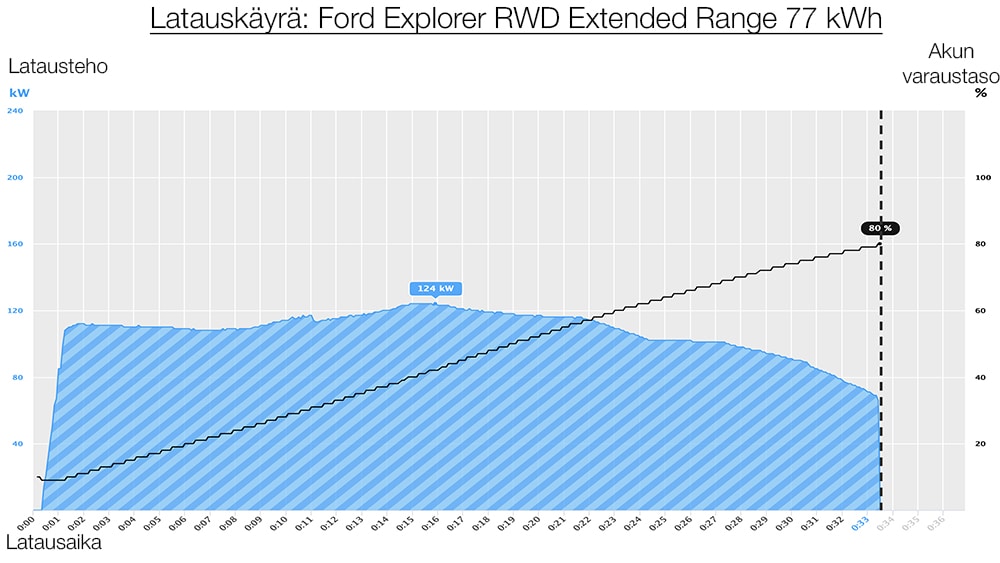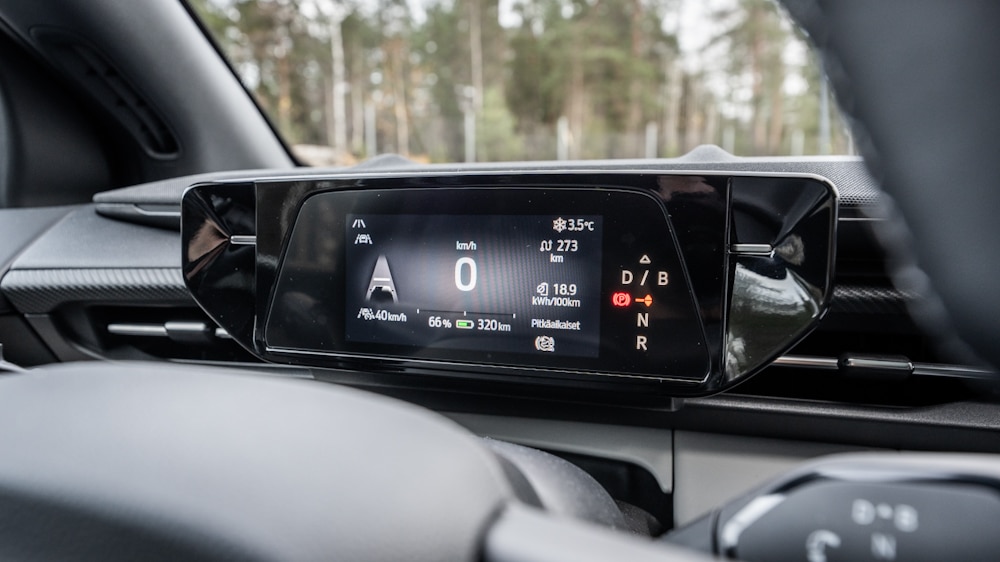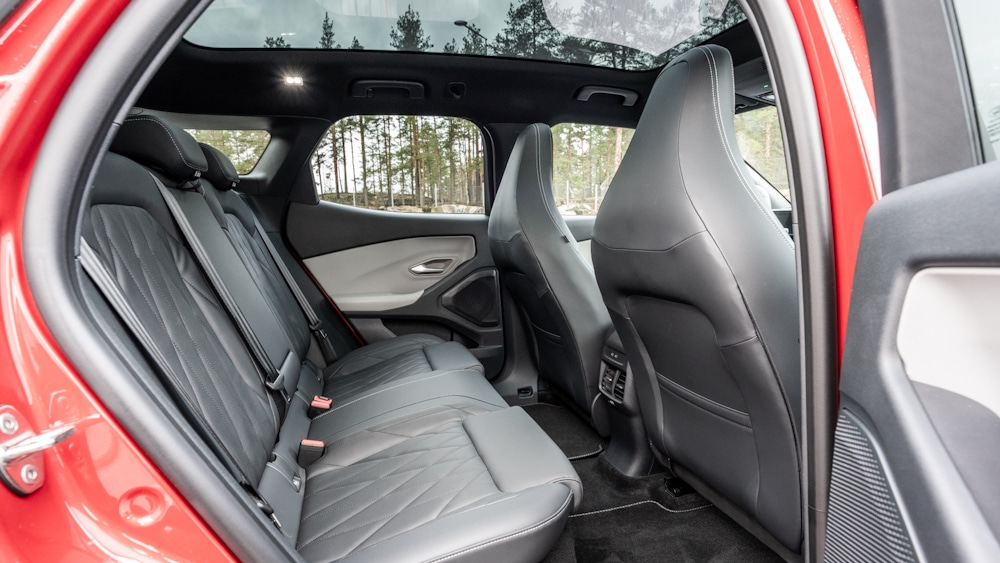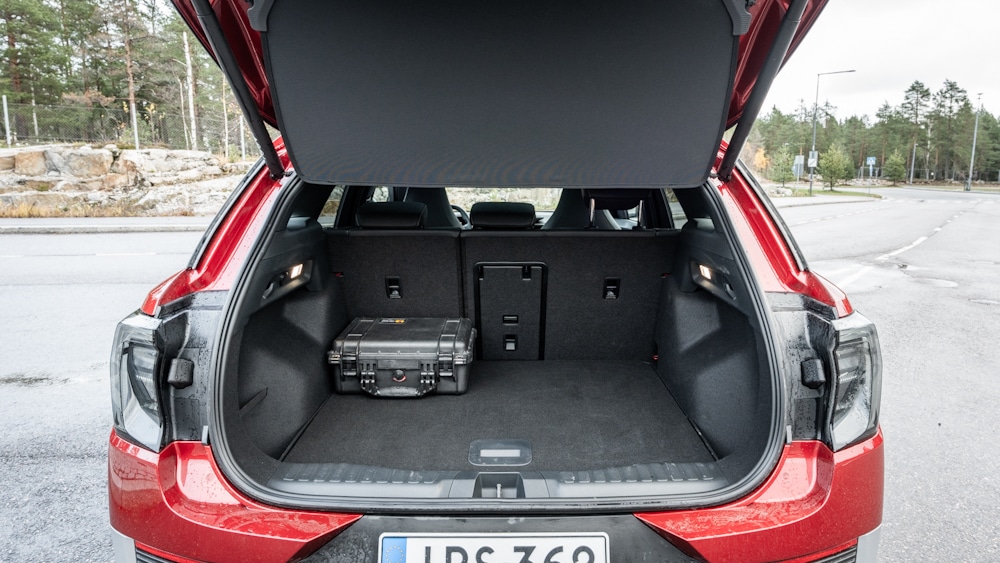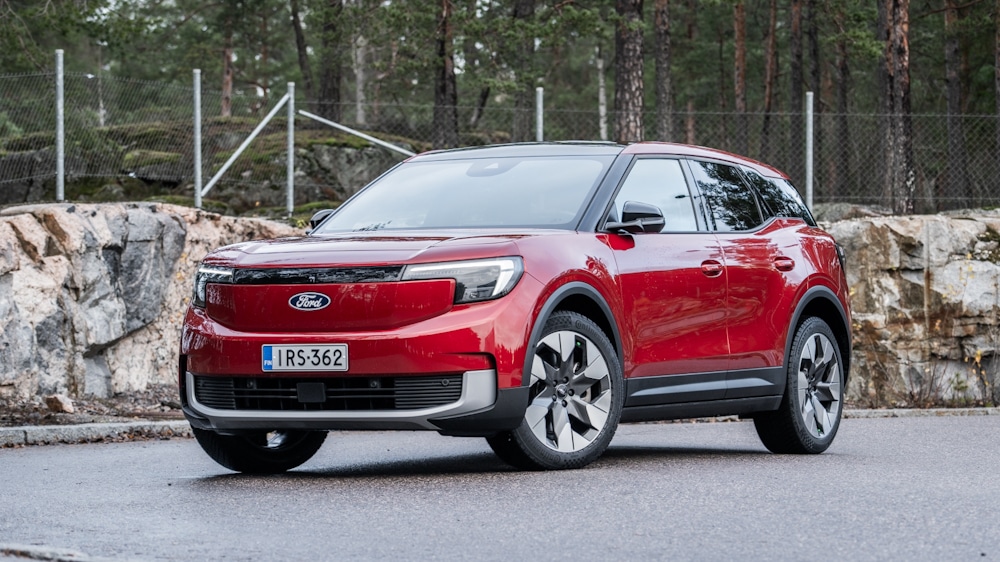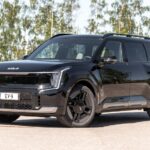The Ford Explorer has been an iconic SUV model and a best-seller for the American automotive industry since the early 1990s. The test-driven all-new European-oriented and all-electric Explorer has taken a significant new direction in the model’s history, while making an important addition to Ford’s European all-electric line-up.
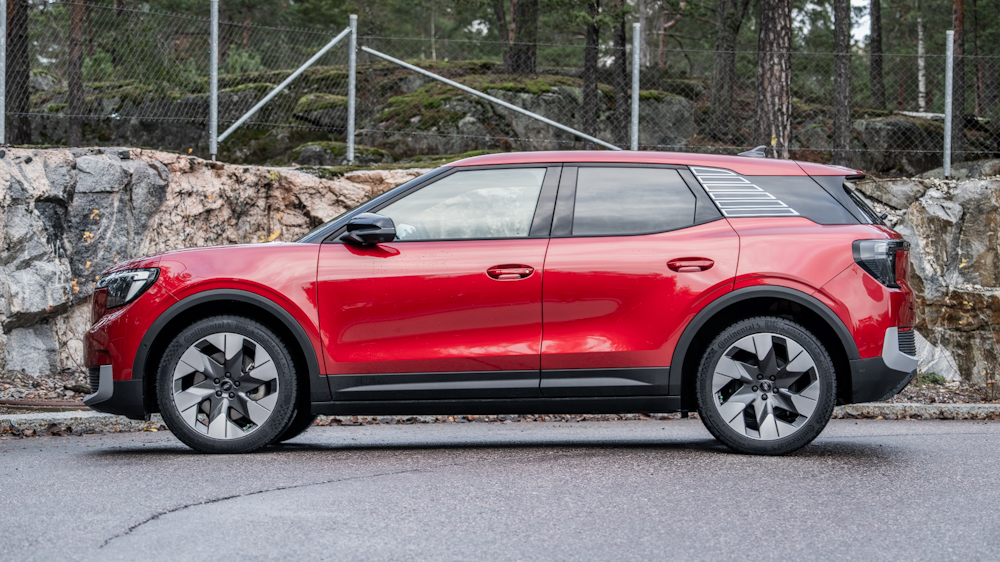
The compact Explorer is less than 4.5 metres in length and, in collaboration with Volkswagen, is built on the same MEB chassis as the ID.4 and Skoda Enyaq. “The ‘sister relationship’ with Volkswagen cannot be overlooked in all respects, even if from the outside you cannot detect any genetic inheritance.
“American heritage, European DNA”
The all-electric Explorer has been designed with European consumers in mind and will be built at the Cologne plant. In terms of exterior design language, similarities with the internal combustion engine Explorer can be seen. From the side, the proportions are visually close and the C-pillar rests on the ‘front hatch’, as on many newer and older Explorers.
The exterior styling of the car is chiselled simplicity. The body-coloured roof is a ‘floating’ design, with the window frames and pillars in black. The door handles have been retained as traditional user-friendly handles. The exterior has been kept simple but modern in style.
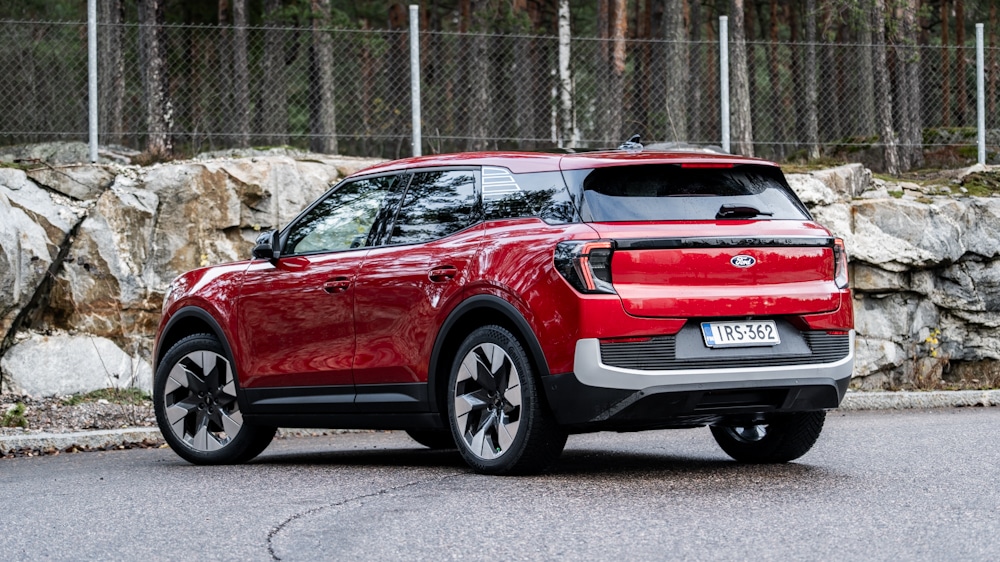
The Explorer is just over 10 centimetres shorter than the ID.4 model. Despite the shorter length, the Explorer has enough space for European tastes, and there is enough legroom in the back for a taller traveller.
The cabin is ergonomically better than many of its rivals and seating comfort is good. Controls and storage are within easy reach, and even the lower third of the seat can be operated without removing the hand from the elbow rest.
Practicality and storage of goods have been taken care of in the American way. The centre console under the elbow provides space for up to three large drinks bottles, a laptop or a handbag. There’s also plenty of extra storage space under the centre console, where an emergency window hood is fitted.
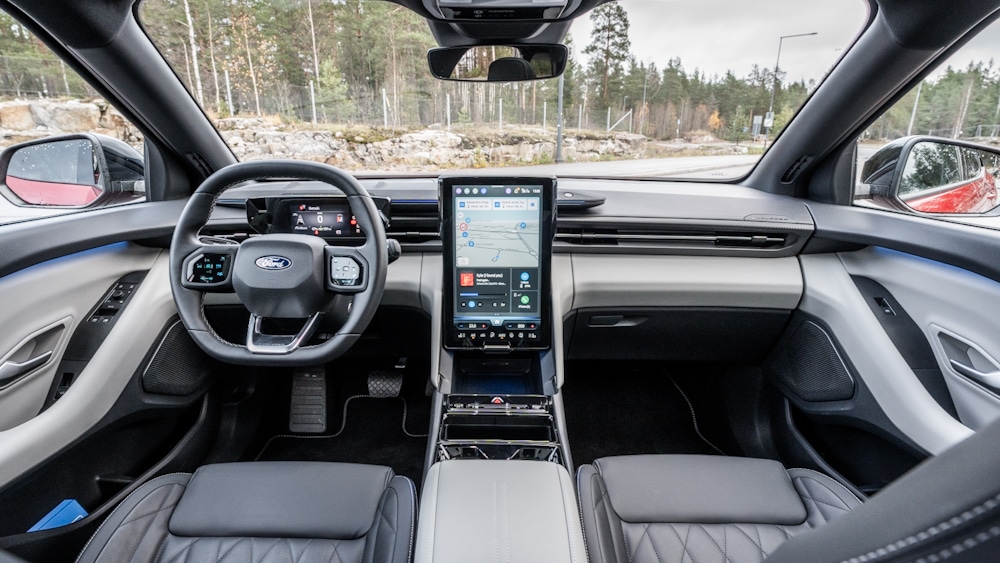
However, Americanism inevitably comes to mind when looking at the quality of the interior. There’s not much to complain about in terms of the quality of the materials used in the cabin, but there have been better examples in this price range. Tyre noise also has a big impact on quality and in the case of the Explorer, despite the friction tyres, decibels varied quite a lot on different roads.
Soundbar and tilting large screen
The collaboration with Volkswagen is evident in a number of details in the cabin, such as the control buttons on the door, the small trip meter, the steering wheel whiskers and the functions of the intercom. Despite the similarities, the interior, like the exterior, has the overall look of a Ford.
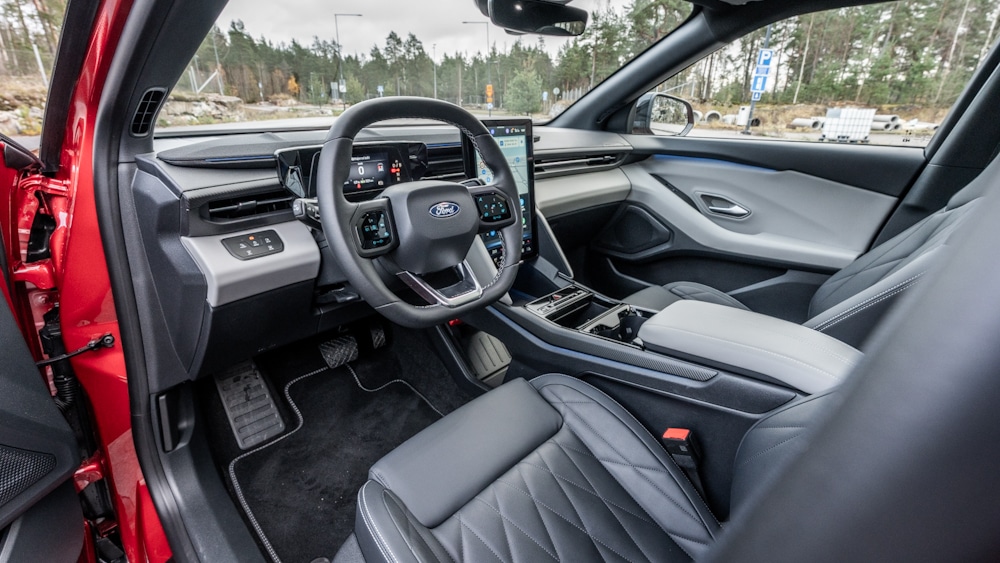
All all-electric Explorer models come standard with a soundbar on the dashboard and a large 14.6-inch centre screen. In the Premium trim level, the sound system is further enhanced with additional speakers and a B&O soundbar, which will not disappoint the average car enthusiast.
The Premium trim level is reasonably priced to say the least, as for an extra €2,000 the car gets better headlights, a power tailgate, 20-inch wheels, cabin ambient lighting and full leatherette upholstery in addition to the sound system.
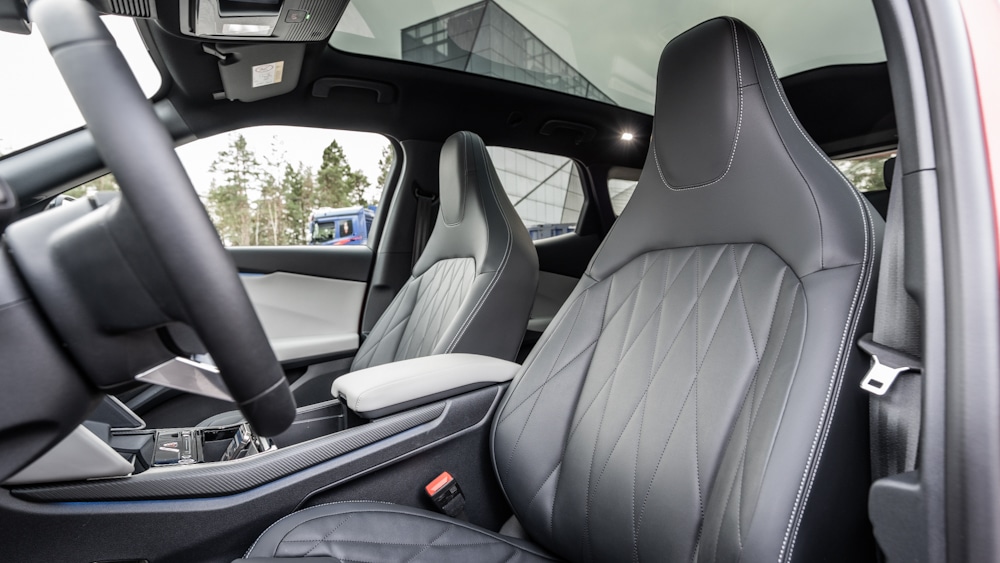
The large instrument cluster is mostly easy to use visually and functionally. The buttons are large and the screen is not overloaded with different menus. The large screen experience can be taken to the next level, at least for navigation and music listening, with wireless Apple CarPlay & Android Car. In less than a week of test driving, I even got the feeling of the best Apple CarPlay experience ever.
The centre screen can be tilted by sliding the bottom edge, making the experience more ergonomic to your liking. When closest to the horizontal plane, it’s easy to hide things behind the screen. The centre console has a wireless charging station for one phone.
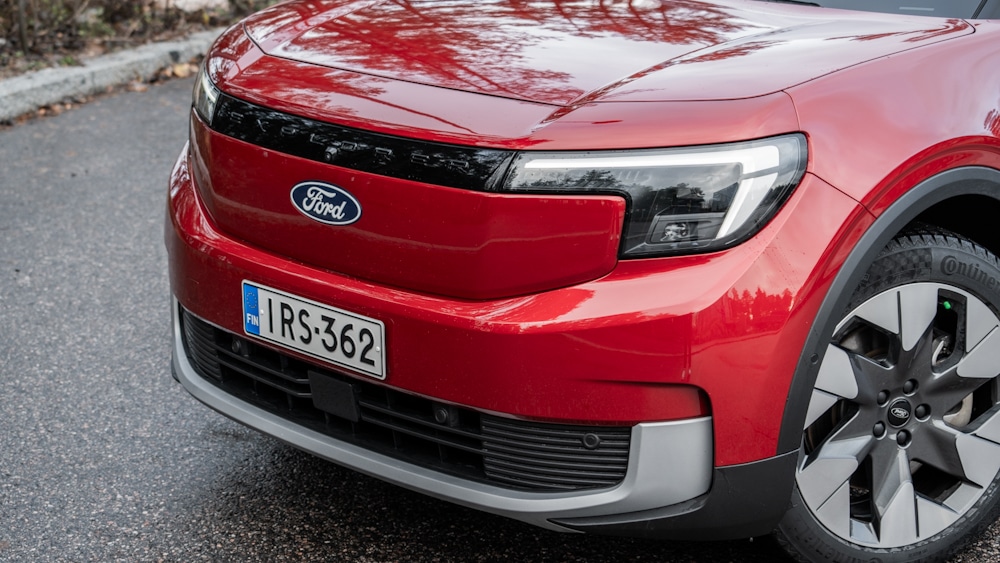
The car’s length and good passenger space slightly compromise the boot size compared to the ID.4 and Enyaq. The Explorer’s 470 litres should be enough for many, but leaves around 70 litres of boot space for the ID.4 and 115 litres for the Enyaq. Despite their similar floorplan, the comparison is not entirely fair, as the Enyaq is about 20 centimetres longer than the Explorer.
Stiff at high speed, charging surprised
There were several interesting findings about the Explorer’s driveability. The ride is electric as an electric car, but the feel of the chassis left a slightly choppy and bouncy sensation at higher speeds. There is a need for a more determined approach to chassis stiffness and suspension softness, at least on Finland’s rough roads.
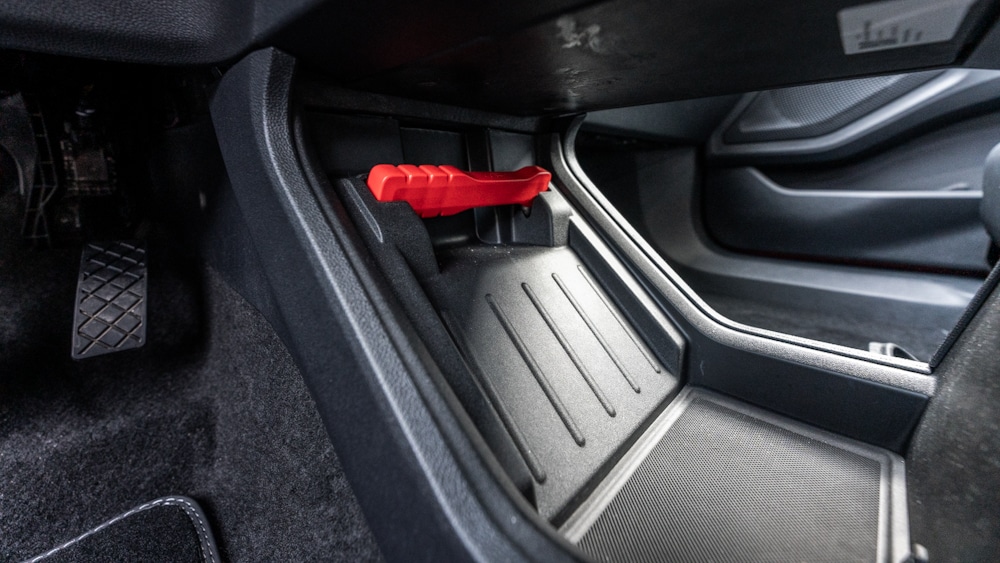
In terms of steering, there is a reasonable amount of feel and precision. The light steering response and feel can be adjusted somewhat from the driving menu, as can the driving dynamics and power line.
The test car was a rear-wheel drive 210 kW model. In Normal and Sport mode, the power train was a bit too racy, but Eco mode gave the throttle the necessary calmness. Brake pedal feel is pleasant and the pedal feel lacks the overly harsh boost that plagues many modern cars.
During the test week, temperatures ranged from a few degrees below zero to above zero. In mixed driving, electricity consumption remained below 20 kWh/100 km and in cruising at 100 km/h on the motorway, the average consumption was 17.5 kWh/100 km.
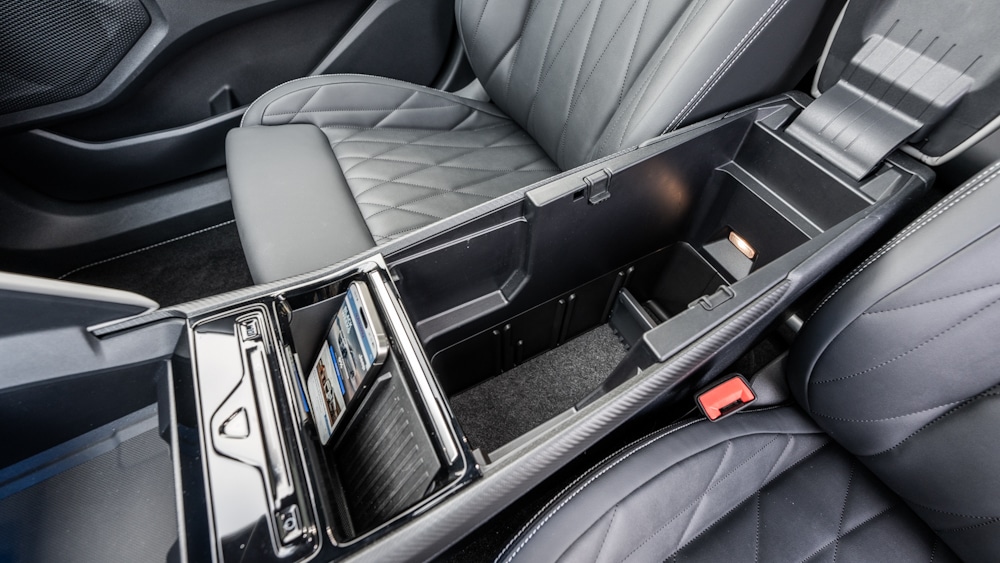
With the larger Extended Range battery, the available battery capacity is 77 kWh in the test-driven rear-wheel drive model and 79 kWh in the four-wheel drive model. The range was completed at the end of the year with the rear-wheel drive Standard Range model with a capacity of 52 kWh. Based on the test-drive week’s consumption in temperatures of a few degrees and in mixed driving, the Explorer can cover just over 400 km on a single charge with the larger battery.
For the test drive, the manufacturer promises a maximum fast-charging capacity of only 135 kW, but a charging time (10-80%) of only 28 minutes. Charging times sometimes need to be treated with caution and in the case of the Explorer, it should be possible to maintain a high charge rate well above 50% to achieve the result claimed by the manufacturer.
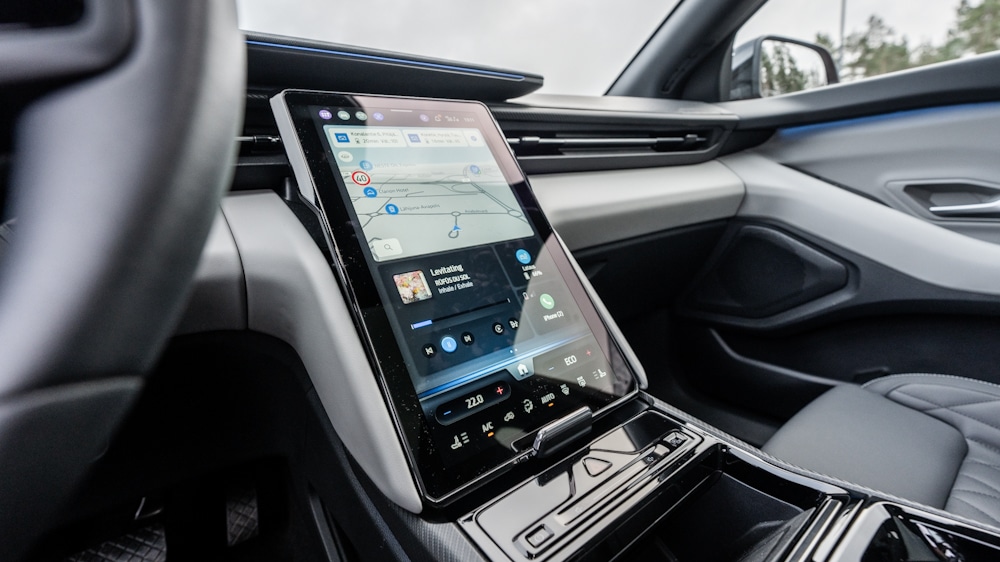
The car clearly indicates the current maximum charge rate and offers the possibility to preheat the battery by pressing a button. Battery preheating is also triggered when navigating to the charging station, should you need it – making battery preheating as easy as possible.
The charging test was started at the end of a longer drive without battery preheating, with the car reporting a maximum charge power of 103 kilowatts before charging. Charging started at 110 kilowatts and the car was able to charge at over 100 kilowatts up to 70%. In total, the time to charge from 10-80% was only 33 minutes without battery preparation.
The all-electric Ford Explorer is equipped with many of the ingredients for success. The Volkswagen collaboration doesn’t even seem to have any reputational damage, as Ford has managed to make the car, apart from minor VW details, its own, good-looking entity. In addition to its looks, the Explorers’ strongest assets are the practicality of the interior and good cabin ergonomics, combined with the functionality of an electric car.
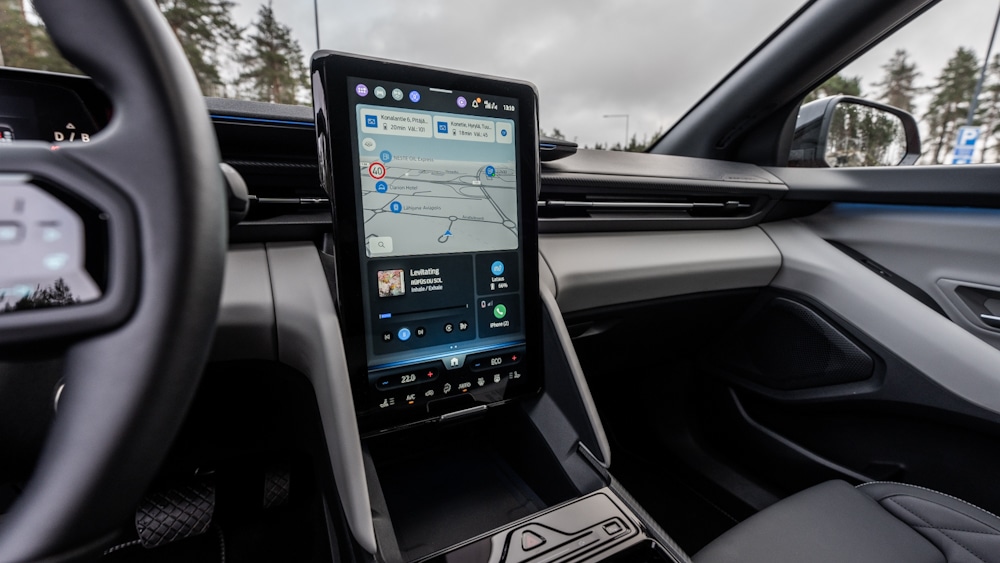
Ford Explorer Premium RWD Extended Range
- Electric motor power: 210 kW. (286 hp.)
- Electric motor torque: 545 Nm.
- Acceleration: 6.4 sec. (0-100 km/h)
- Driving battery capacity (net): 77 kWh.
- Manufacturer’s declared combined fuel consumption: 15.3 kWh/100km.
- Manufacturer’s declared range (combined): 572 km (WLTP)
- Electricity consumption during test drive: 17-19.5 kWh/100km (-2 – 5 ⁰C)
- Test-driven range on a single charge: 450-395 km.
- Maximum charging power (DC): 135 kW.
- Maximum charging power (AC): 11 kW.
- Deadweight: 2102 kg.
- Total permissible mass: 2675 kg.
- Luggage compartment: 470 l.
- Traction: rear-wheel drive
- Towing capacity (with/without brakes): 750/1000 kg.
- Starting price: 43 020 euro (RWD Standard Range 52 kWh)
- Starting price: €50 220
- Price for test drive with options: €54 520
